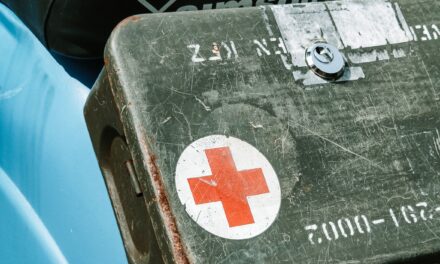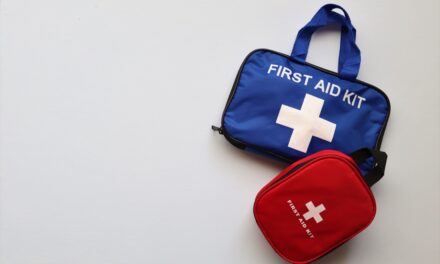Introduction: The Importance of a Hiking Survival Kit
Embarking on a hiking adventure brings with it the thrill of exploration and the peace of the great outdoors. However, the unpredictability of nature requires hikers to be prepared for any scenario. This is where the concept of a hiking survival kit becomes crucial. In this comprehensive guide, we delve into the essential components of a hiking survival kit, designed to ensure safety, preparedness, and self-sufficiency in the wilderness. Whether you’re a seasoned hiker or embarking on your first trail, understanding what to include in your survival kit is a vital aspect of your journey.
The need for a well-equipped hiking survival kit stems from the inherent risks associated with hiking, such as sudden weather changes, potential injuries, or unexpected delays. This guide aims to provide an engaging and in-depth overview of the essential items and tools that should constitute your hiking survival kit, ensuring that you are prepared for a wide array of situations. By integrating expert insights, practical advice, and the latest research, we will explore effective strategies to ensure you are well-equipped for your hiking adventures.
From basic necessities to advanced survival tools, this guide covers a broad spectrum of items, ensuring readers from all levels of hiking experience can find valuable and practical advice to enhance their hiking preparedness. By the end of this guide, you will have a clearer understanding of the essential components of a hiking survival kit, enabling you to tackle any trail with confidence and security.
Navigational Tools
Effective navigation is crucial in wilderness hiking. Essential tools include:
- Compass and Maps: Even in the age of GPS, the reliability of a compass and physical maps remains unmatched.
- GPS Device: A GPS device can be a lifesaver, especially in unfamiliar terrain. Ensure it’s fully charged and consider carrying extra batteries or a solar charger.
Shelter and Warmth
Protection from the elements is vital for any hiking trip:
- Emergency Shelter: Items like a lightweight tent, bivvy, or emergency space blanket can provide necessary shelter from wind, rain, or cold.
- Fire Starting Kit: Waterproof matches, lighters, and fire starters are essential for warmth, cooking, and signaling.
Water and Food
Staying hydrated and nourished is critical:
- Water Purification: Portable filters or purification tablets are crucial as they make natural water sources safe to drink.
- Non-Perishable Food: High-energy, lightweight, and non-perishable items like energy bars, nuts, and dried fruits are ideal.
Health and Safety
A well-prepared hiking kit can address health and safety concerns:
- First Aid Kit: A comprehensive first aid kit should include bandages, antiseptics, pain relievers, and any personal medications.
- Multi-Tool: A good quality multi-tool can serve various purposes, from repairs to first aid.
- Whistle and Signal Mirror: For attracting attention in case you get lost or face an emergency.
Additional Essentials
Other items to consider include:
- Weather-Appropriate Clothing: Dress in layers and carry extra clothing to adapt to changing weather.
- Headlamp or Flashlight: Essential for any low-light situations. Don’t forget extra batteries.
- Sun Protection: Sunscreen, sunglasses, and a hat can protect against sunburn and heatstroke.
In the next section, we’ll provide a summary of these essential components and discuss how to effectively use and maintain your hiking survival kit.
Consolidating Your Hiking Survival Essentials
Our comprehensive overview of the hiking survival kit equips you with the knowledge to prepare effectively for your hiking adventures. To encapsulate the key elements:
- Navigational Tools: Rely on both traditional tools like compasses and maps, and modern technology such as GPS devices for effective navigation.
- Shelter and Warmth: Include lightweight emergency shelters and fire-starting tools to protect against the elements.
- Water and Food: Prioritize water purification methods and pack high-energy, non-perishable food items to maintain energy levels.
- Health and Safety: A well-stocked first aid kit, a versatile multi-tool, and emergency signaling devices are crucial for safety.
- Additional Essentials: Adapt to weather conditions with appropriate clothing, lighting, and sun protection.
Effective Use and Maintenance of Your Kit
Having a well-prepared kit is just one aspect of hiking survival. Here’s how to make the most of it:
- Regularly Review and Update Your Kit: Keep your kit up-to-date by replacing used or expired items and considering new advancements in survival gear.
- Familiarize Yourself with Each Item: Knowing how to use every item in your kit is crucial. Regular practice and usage can build confidence and efficiency.
- Adapt Your Kit to the Hike: Customize your kit based on the specific conditions and challenges of your hiking destination. Factors like climate, terrain, and the length of your hike should guide your preparation.
- Continuous Learning: Stay informed about the latest in hiking and survival techniques to enhance your preparedness. Resources like [Survivalist.com](https://www.survivalist.com/) offer valuable insights and updates.
In conclusion, a well-prepared hiking survival kit is an indispensable part of any hiking trip. By carefully selecting and maintaining your gear and complementing it with the necessary skills and knowledge, you can enjoy your hiking adventures with peace of mind, ready to face any challenges that come your way.








